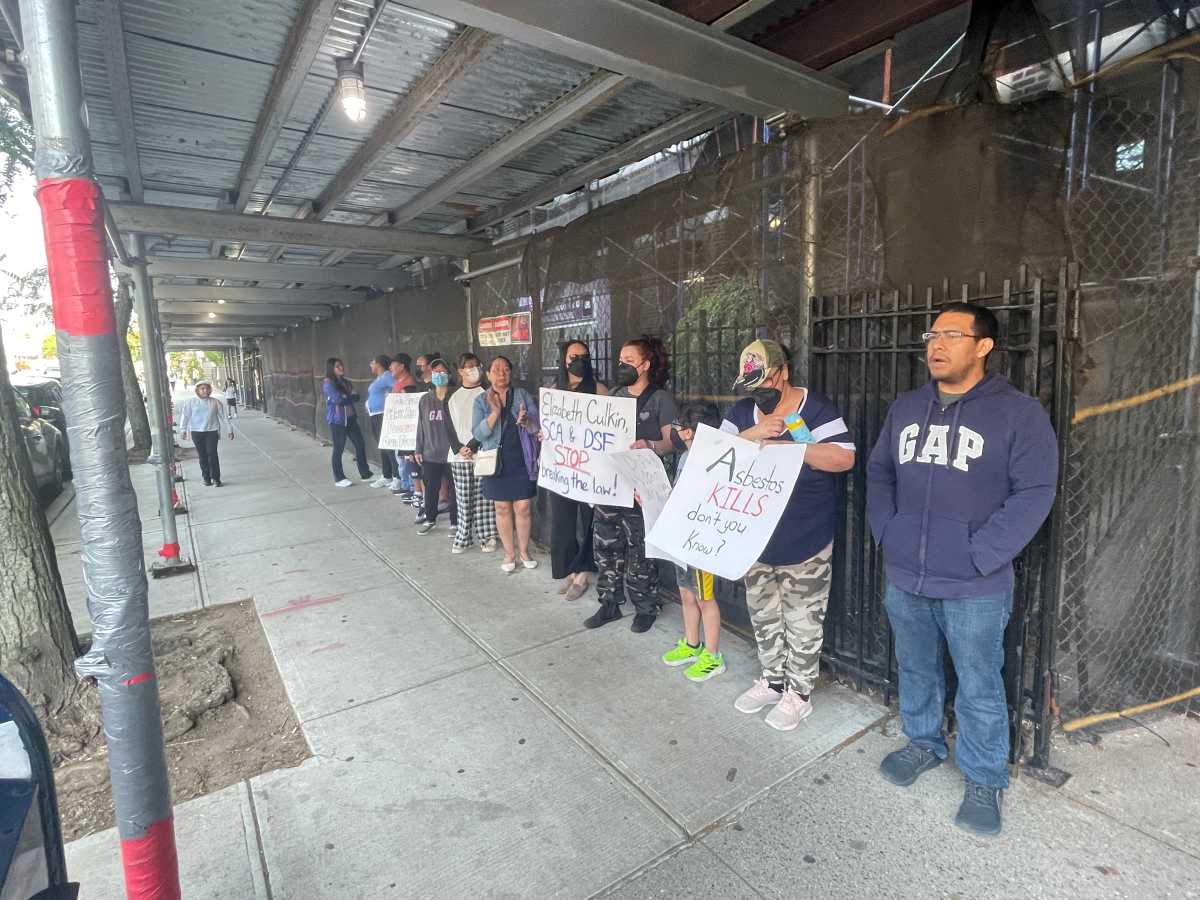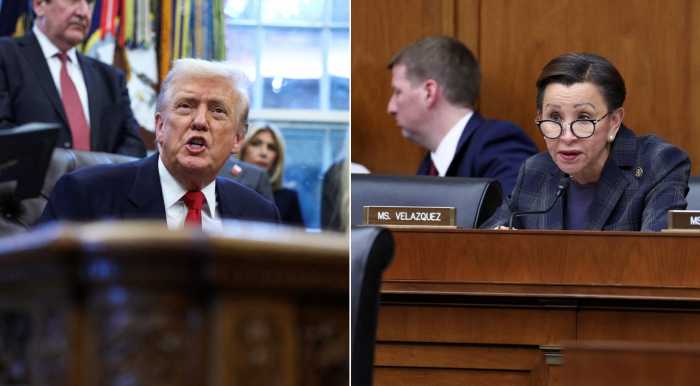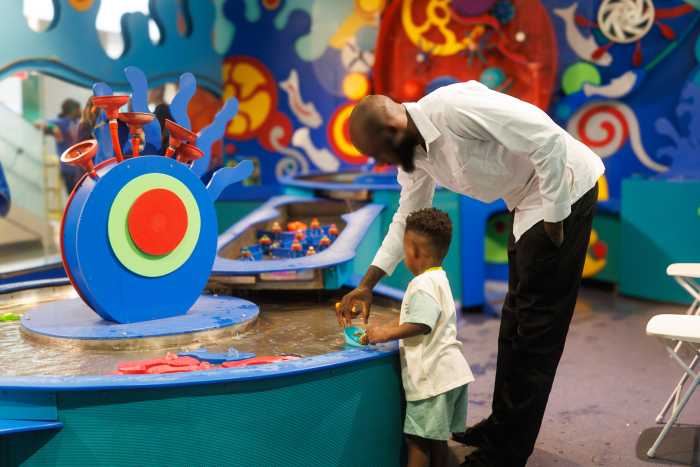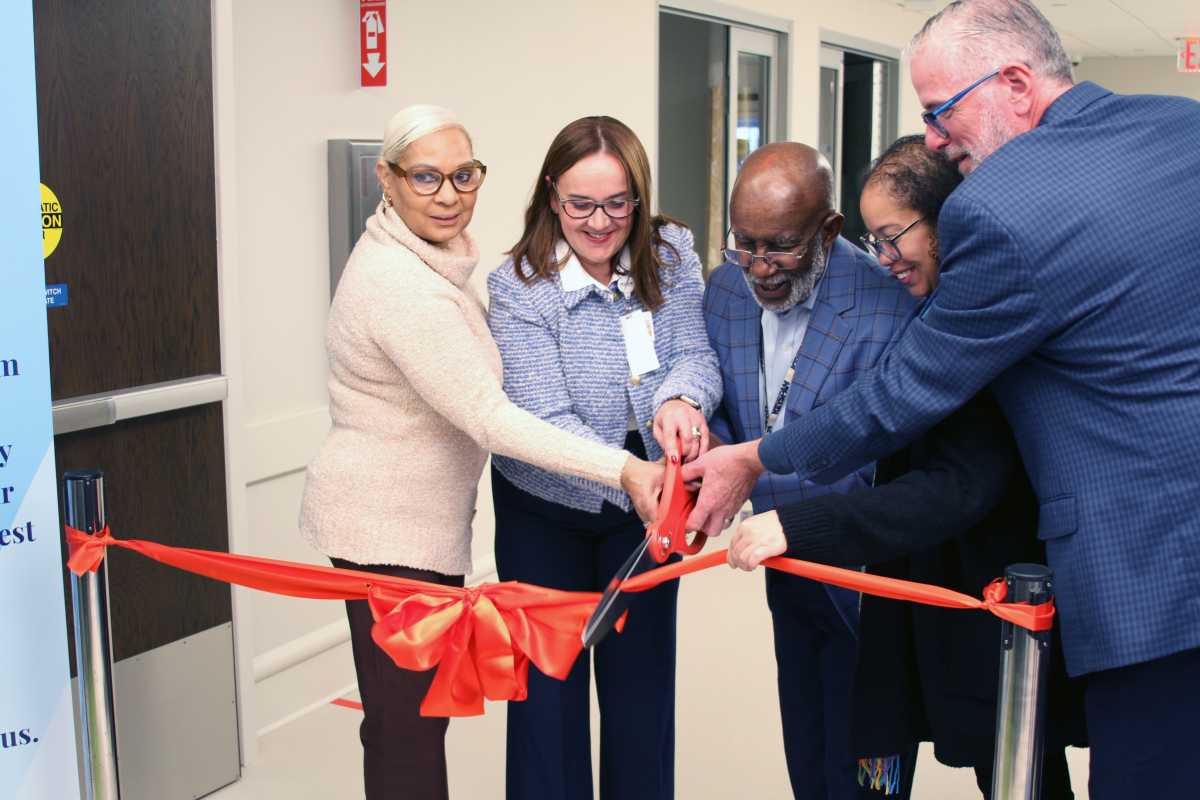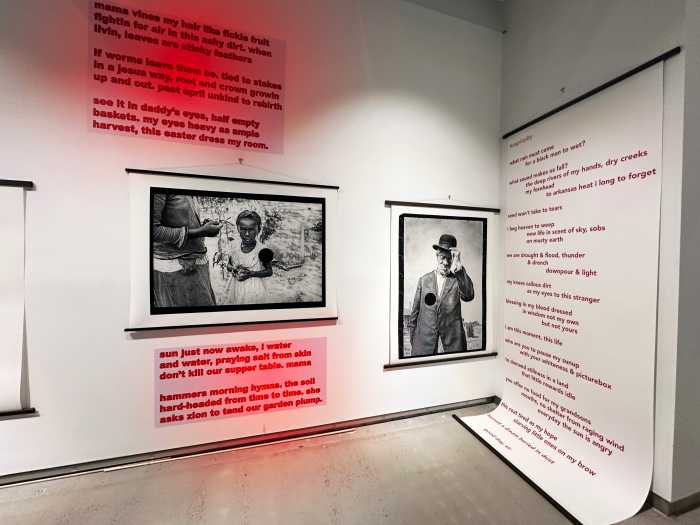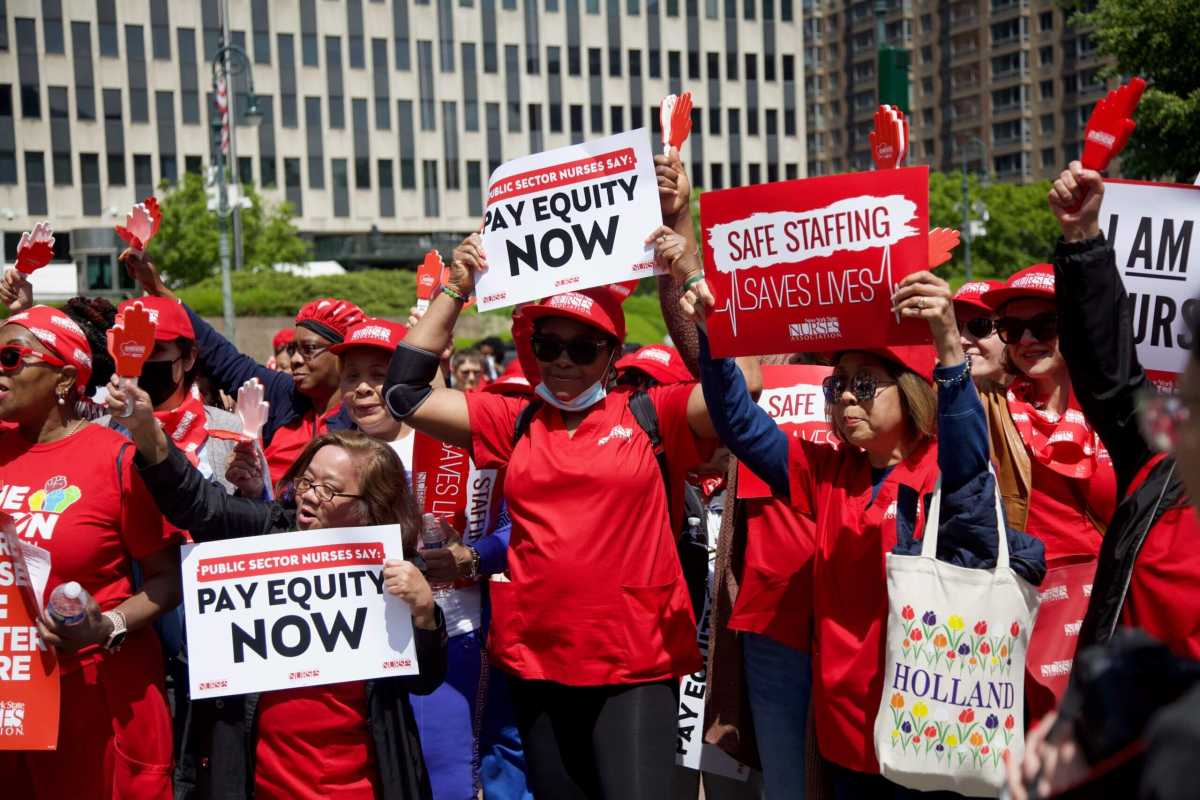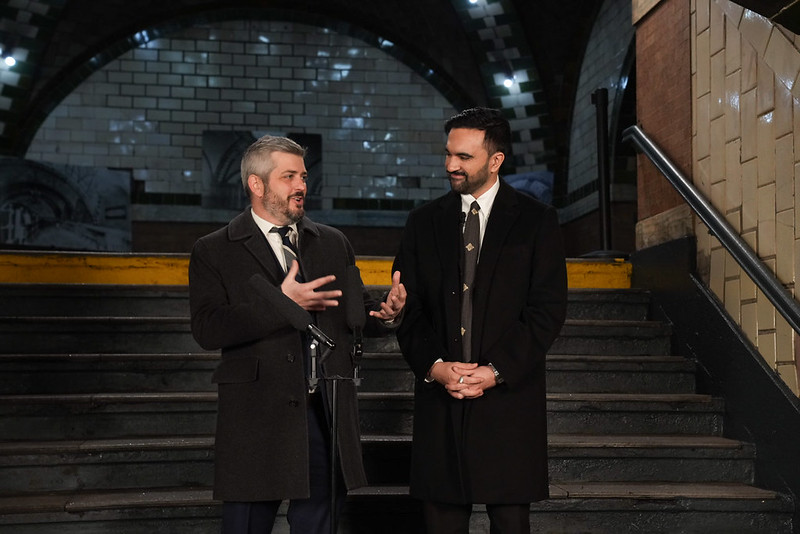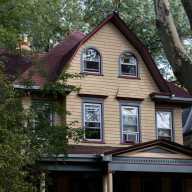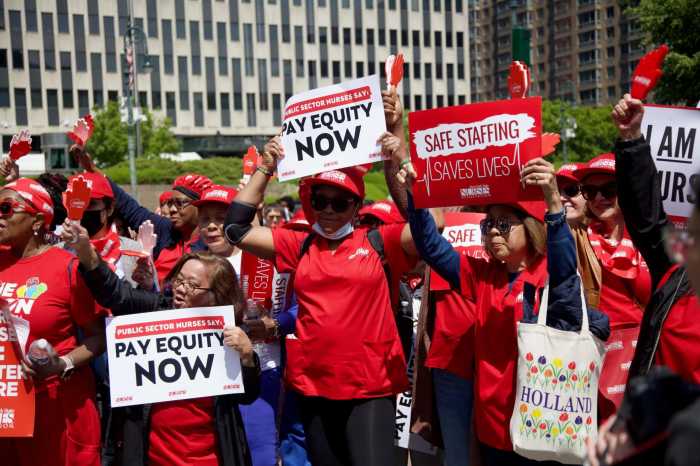It could have been just another morning at P.S. 176 The Ovington School in Dyker Heights, but on June 12 — just days before the end of the school year — more than a dozen parents lined up outside the school holding signs and chanting: “Protect our children! No asbestos! We want answers!”
The protest aimed to highlight allegations that ongoing construction at the school had been exposing students to asbestos for months. Parents also called for the removal of Principal Elizabeth Culkin, accusing her of failing to properly inform families about potential health risks.
“I can’t sleep over this,” said Luisa, a P.S. 176 mom who helped organize the demonstration. (Some parents’ identities have been protected for fear of retaliation.)
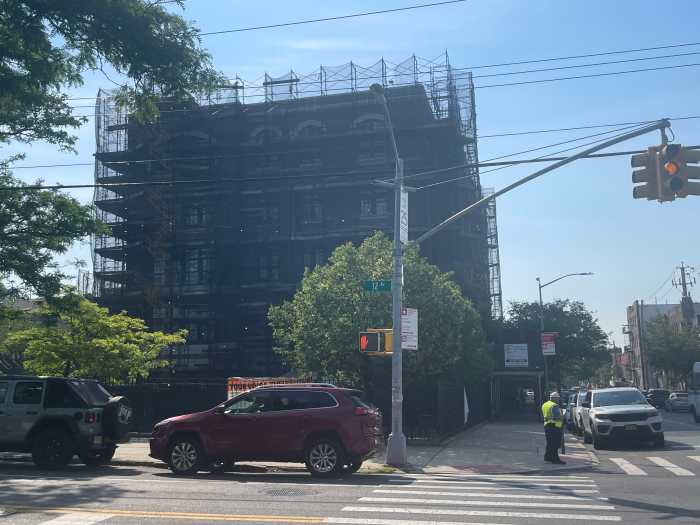
Some P.S. 176 parents said they were unaware of any asbestos concerns. Five people approached protestors seeking answers that morning. Organizer Andres Juarez, the former Title I PAC chair, explained the situation in Spanish. Since March, he’s been working to confirm whether exposure occurred and hold school officials accountable.
At a May Community Education Council 20 meeting attended by Superintendent David Pretto, Juarez spoke openly about his efforts.
“The entire situation at P.S. 176 could’ve been handled very differently from the start,” Juarez said. “Ms. Culkin could’ve been transparent and forthcoming with everyone about the school construction and all of its associated dangers. No parent should have to go through the great lengths that I did in order to get a response.”
An ongoing citywide issue
Asbestos, once commonly used for insulation and fireproofing, is still found in old cement, ceiling tiles, paint, and steam pipe coatings. The U.S. Environmental Protection Agency banned most uses in 1989, though a final ban wasn’t passed until 2024.
Exposure can lead to serious health issues, including lung cancer.
New York State law requires that local education agencies inspect their schools for asbestos and make plans to prevent or reduce asbestos exposure.
On April 9, Comptroller Brad Lander released an audit showing 82% of NYC public schools with asbestos weren’t inspected between 2021 and 2024. The audit also found the Department of Education “failed to inspect the vast majority of schools containing ACM in every inspection cycle dating back to 1997.”
“Our first job in government is to keep New Yorkers secure,” Lander said. “When it comes to our kids, the City must adhere to the rules designed to protect them from known hazards — this is not optional. Yet DOE has stunningly failed to follow the minimum national standard for asbestos management for years.”
The first concerns
Construction at P.S. 176 began during the 2021-2022 school year and was set to finish by August 2024, but paused for months before resuming early in the 2024-2025 school year.
Juarez said he knew asbestos abatement was planned and saw flyers about it. But in September, he noticed workers without protective gear disposing of debris into a large green container labeled “asbestos,” in the school playground.
“The debris and rubbish materials were not bagged and were carried through the children’s small school playground,” Juarez said. “The construction dust, debris, and rubbish materials, and probably asbestos, was being dispersed within the children’s playground, which the P.S. 176 school staff continued to use and had the children play during the school day.”
He described a chute funneling debris from the building into the container.
Another parent, C.D., said they also saw the asbestos-labeled container near the front door where parents dropped off children.
Parents began asking Juarez about the containers. As the Title I PAC chair, he raised the issue with school leadership that October, asking whether safety precautions and air quality monitoring were in place.
He said Culkin assured him she wouldn’t allow children to stay if it was unsafe.
“I trusted Ms. Culkin at her word,” he said. “So I accepted her response and moved on. We continued to have monthly meetings, but construction and asbestos were never brought up again.”
Things begin to fall
By late February, construction concerns escalated. Ceiling plaster fell from a third-floor bathroom, and on March 6, the school boiler was purged, causing pressure to build throughout the building.
In an email later shared with Juarez and DOE officials — including Pretto and Genesis Sanchez of the Department of Facility Services — Culkin described “incredible” noise and reported falling paint chips and hallway debris. In the same email, she said, parents had brought up their concerns in a School Leadership Team meeting.
Juarez said other issues included water puddling, dust, exposed pipes, peeling paint, leaking ceilings, and pinkish debris falling from above.
During that SLT meeting, a parent said her son’s fifth-floor classroom had no window panes, just wood boards exposing students to the cold, indicating that the construction crew had not yet installed replacement window panes. Juarez said Culkin gave vague answers but eventually admitted the issues were tied to construction and mentioned asbestos. She allegedly told attendees not to share the information.
Seeking answers, Juarez offered to draft an email to city agencies, but Culkin declined and refused to share DOE or School Construction Authority correspondence.
On March 9, Juarez sent Culkin a draft email outlining the issues. She invited him and two mothers on a walkthrough the next morning. At 6:45 a.m., they toured the fifth-floor classrooms and saw conditions firsthand.
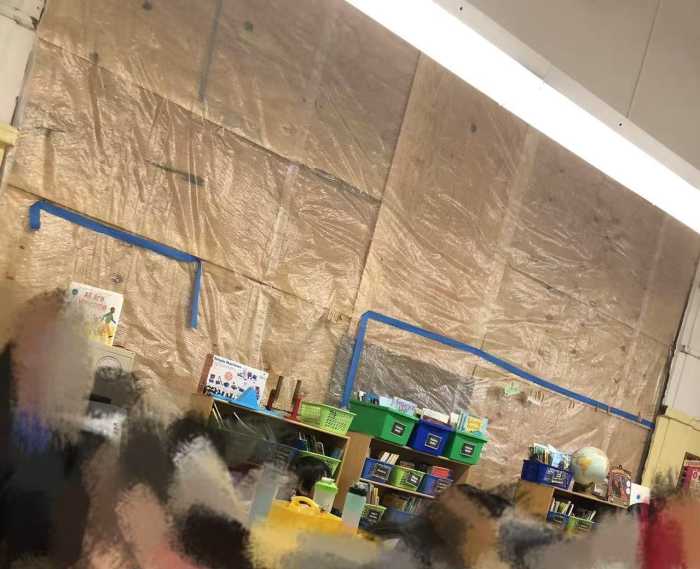
“What Ms. Culkin had verbalized to us did not do it justice,” Juarez said. “The conditions were worse than I had thought.”
One mother, who asked to be identified as Marissa, reported chipping paint and cracks in the walls.
Culkin later forwarded Juarez emails from DFS, SCA, and Pretto. In one, DFS deputy director Sanchez called the classrooms “unhabitable/unacceptable for students and faculty to have to continue to come into class in these conditions.”
Juarez revised his email, warning agencies about classrooms “exposed to the elements” and “unsafe.” He sent it March 10 to multiple city departments and the construction firms involved: Airtek Environmental LLC and JVN Restoration Environmental Service Contractors Inc.
“The health and safety of our children and the adults may be at risk since that is where they spend a lot of time each day,” he wrote.
On March 11, DFS director of facilities Aramis Rodriguez and others inspected the school. Culkin told Juarez his letter prompted the investigation and praised his efforts, saying no further action was needed.
Tensions rise
Within days, Juarez noticed a sign posted outside the school from the SCA about an asbestos emergency — but it listed only two classrooms.
He alerted the School Leadership Team and urged them to inform the entire school community.
Culkin allegedly told him to be patient, assuring him everything would be resolved.
“I said something to the effect of ‘‘I trust you, I don’t trust them,’” Culkin said.
On March 19, SCA project support manager Steven Gonzalez contacted Juarez about his March 10 letter. Juarez said Gonzalez “danced around the issue” and didn’t address asbestos concerns. Culkin later said Gonzalez was furious that she allowed a parent to send a letter, but said she defended him, noting parents had a right to speak up.
Juarez continued pushing for transparency, insisting parents and teachers deserved to know. He planned to address the issue at the March 25 SLT meeting and sent his agenda to the team on March 24.
Juarez’s ClassDojo account allowed him to contact the whole school. Shortly after he sent the agenda, Culkin allegedly canceled his account. He said school staff told him she was displeased, particularly with his plan to inform the school about construction concerns.
Demoralized, Juarez resigned from his positions on the SLT and the Title I PAC.
“I [resigned] from my position because I could not be complicit with this thing about keeping this a secret,” he said. “I wanted to blow the whistle and inform parents, teachers, and school staff. In essence, I believe that they wanted to keep it a secret.”
Even after Juarez stepped down from the Title I PAC and SLT, parents kept pressing for answers.
Parents C.D. and Nicky said the school’s response — or lack of one — eroded their trust in Culkin. C.D. said Culkin told her to send her child elsewhere if she felt unsafe. Nicky said she never received a letter about the asbestos in her child’s homework folder, though other notices were regularly sent home. Both questioned why no notice appeared on ClassDojo.
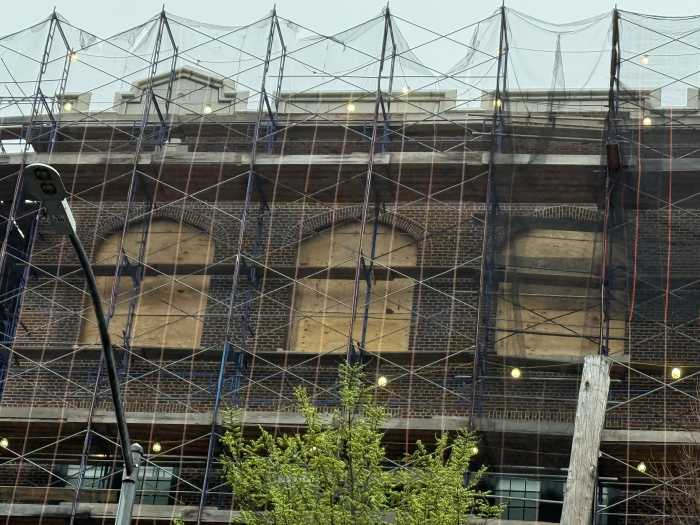
Marissa and Nicky said their children became seriously ill during the school year. Marissa’s son, healthy in September, developed severe allergies and pneumonia in November and missed 40 days of school.
Nicky’s son’s asthma worsened. A broken radiator valve overheated his classroom, and because of scaffolding, windows couldn’t be opened. Nicky believes this contributed to his illness. At one point, Nicky’s doctor prescribed steroids and ordered him to stay home to avoid infection. In April, Nicky said, Culkin suggested moving her son to a different classroom.
“Why would I change his class?” Nicky said. “Change his teacher? Change his friends? Change his setting? That makes no sense to me. That’s not a resolution, especially because what about the other kids who are suffering in the class?”
Juarez and other parents told Brooklyn Paper they believe Culkin has a history of retaliating against parents and teachers. In May, a Change.org petition called for her removal, citing her treatment of Juarez and describing her “past and present, retaliatory behavior and authoritarian leadership [as] unacceptable, ineffective, unprofessional, and unbecoming of what a principal should stand for.”
As of July 17, the petition had 744 signatures.
Anger mounts at meetings
At a SLT meeting in early May, which Juarez filmed and shared, he and other parents pressed Culkin on why they weren’t informed about asbestos. Gonzalez, from SCA, also attended.
Video of the meeting shows parents dissatisfied with Culkin and Gonzalez’s answers. Juarez confronted them over his canceled ClassDojo account and lack of communication. When he asked Culkin directly about asbestos, she didn’t respond.
Days later, Gonzalez attended another meeting with Joseph Lazarus, DOE’s executive director of school facilities, and Rodriguez, director of facilities. They explained the construction and asbestos abatement. When parents asked why students were allowed in affected classrooms, Lazarus and Rodriguez continued speaking without giving Culkin a chance to answer. About an hour in, Culkin left without comment.
Luisa told Brooklyn Paper the meeting was scheduled at 2 p.m., just before school pick-up, and ran over an hour.
A week later, parents took their concerns to a Community Education Council District 20 meeting with Superintendent Pretto. On video, Pretto reiterated the DOE and SCA’s stance and said all construction and asbestos documents were posted on P.S. 176’s website as of May 14 and distributed through Gamma, an AI-powered platform used by educators, though not all parents were registered.
CEC20 member Tamara Stern noted the documents were only in English and meetings lacked translators.
Juarez said the documents were incomplete and missing classroom photos.
“A document dump was provided,” he said. “But it is incomplete, and it’s not fair for us to be told, ‘SCA and DFS say that the information has been given.’”
The documents included environmental consultant reports and Airtek Environmental’s test results, which said classrooms were safe. But Juarez doubted the findings, noting they referenced air samples, not dust, and didn’t clarify whether tests were internal or external.
Marissa, a paralegal, said hundreds of pages were provided, but none from 2010 to 2021. She suspected officials hoped no one would scrutinize the files.
She and Luisa voiced disappointment with Pretto’s handling of the meeting.
“I was hoping Dr. Pretto would be more willing to take a stance and actually make changes,” Luisa said. “He was introducing them as though, ‘we provided the parents with everything.’ Well, no, because if you watched the meetings, the SCA, Steve Gonzalez, was there on their behalf.”
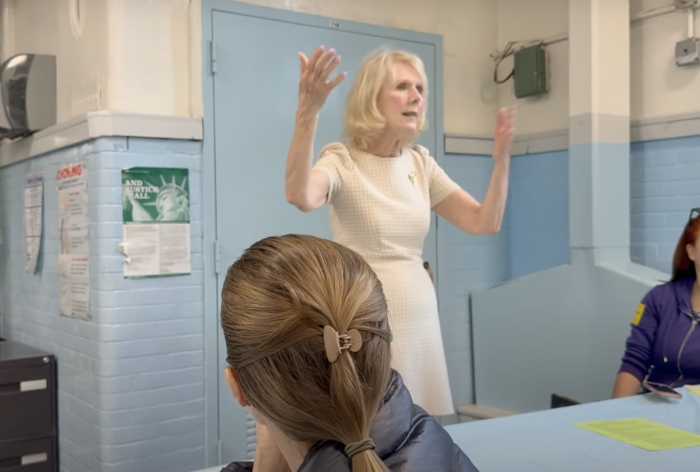
On May 16, Pretto held a Zoom session between Rodriguez and parents. The words from Sanchez’s email — “unhabitable” and “acceptable” — were brought up. Rodriguez said the email referred to air conditioners and window panes not yet replaced.
When asked why the March email still applied in May, Rodriguez replied, “March turns to April quickly, and April turns to May very quickly. It’s at that point in the year that we start to transition from heating season to cooling season.”
Pressed further, Rodriguez admitted the language was strong but stood by his findings.
“The narrative I’m sharing with you is factual,” he said. “If we were wrong for something, there would be no hiding it.”
During the CEC20 meeting, officials from the office of the Public Advocate and Brooklyn Borough Hall voiced support for P.S. 176’s parents. Anthony Duran from the Public Advocate’s office said staff were monitoring the situation. Donavan Swanson from Brooklyn Borough Hall said his office had seen Juarez’s correspondence.
State Sen. Lester Chang also spoke during the meeting and had held Zoom calls with parents. On May 14, he sent a letter to DOE Chancellor Melissa Aviles-Ramos, DFS, SCA, Pretto and Culkin, urging them to address the situation. He said if the responses were “inadequate and unsatisfactory,” he would push for accountability, including legal action.
“There wasn’t clear information about they are testing for asbestos,” Chang told Brooklyn Paper. “All these old buildings has asbestos, and we don’t know if the asbestos particles are in the air. You have confidence, then you have transparency, and that’s really lacking. It doesn’t cost that much money to do that.”
In a statement, DOE Associate Press Secretary Dominique Ellison said, “The health and safety of our students remain our top priority. As with any construction project, we adhere to all health and safety protocols for testing, abatement, and issuance of re-occupant letters.”
Multiple agencies, including the Department of Buildings, Department of Environmental Protection, the state Department of Labor, and the EPA, had visited the site, Ellison said, and the matter has been referred to the Special Commissioner of Investigation.
Additional audits were recently conducted by the EPA and New York State Department of Labor, and that results would be shared when they become available.
“We always welcome family feedback and have conducted several meetings to answer all questions and shared all safety-related documents with the school community,” Ellison said.
Brooklyn Paper made multiple requests for comment on calls for Culkin’s removal and on the Comptroller’s audit but received no reply. The SCA also declined to comment. Airtek Environmental said it could not comment.
The school year ends, and parents look ahead
Juarez and other parents told Brooklyn Paper they believe students were exposed to asbestos during the school year, shaping decisions in its final weeks.
Luisa pulled her child out in late May after a pulmonologist recommended remote learning and ordered a chest X-ray.
“We found out about this in March, and I wanted to pull him out then,” she said. “But I was trying to give the benefit of the doubt. I think partially, I was also just hoping for the best. I didn’t want to believe that there was exposure. But after seeing the documents, there’s just no way I can send him in.”
Nicky said if her son tests positive for asbestos poisoning, she will move him to another school.
“If they would have told us from the beginning, I wouldn’t have sent him to school,” she said. “I would have tried to change his school from the beginning or I would have waited until everything was done the right way. I would have felt differently than I feel now. But if I find out in his blood work that he was exposed to asbestos I’m going to be very, very upset.”
Luisa expressed frustration with the lack of answers, describing constant finger-pointing between agencies and Culkin.
In the end, parents said they simply want clarity about their children’s health and safety.
“We’re not trying to cause conflicts,” Marissa said. “What we want are answers. Why are the kids still being exposed to asbestos? Why were the kids allowed to remain in these classrooms? These are the questions that we’ve had for the past few months.”
One side of P.S. 176’s scaffolding has come down. Construction is expected to wrap up over the summer. Asbestos abatement is ongoing, but parents say they are being notified. Still, Juarez said he grew suspicious when a scheduled abatement didn’t occur during a recent weekend, calling it another sign of poor transparency.
He spent June reviewing SCA documents and said he’s considering pulling his children from the school over fears of retaliation. Juarez said he’s already faced threats but worries that if he leaves, no one else will push for answers.
“I had no choice but to keep fighting,” he said.



